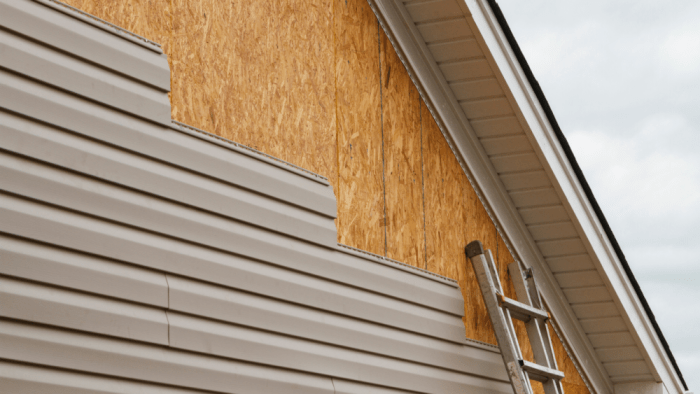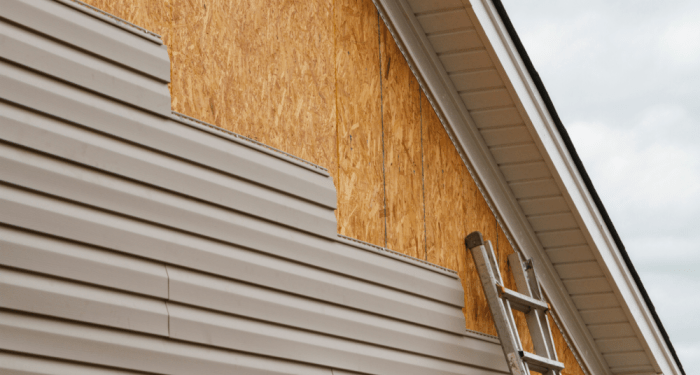When it comes to the cost of replacing wood siding, various factors come into play. From the types of wood siding available to labor costs and additional expenses, this comprehensive guide delves into every aspect you need to consider before embarking on a wood siding replacement project.
Get ready to explore the intricacies of pricing and cost-effectiveness in the realm of wood siding.
Factors impacting the cost of replacing wood siding
![Cost to Replace Wood Siding - Contractor's Guide [2024] Cost to Replace Wood Siding - Contractor's Guide [2024]](https://airconditioner.jpnn.com/wp-content/uploads/2025/07/6707f7f527809bdb1cd0805e_65cde9190506785674a9875f_cost-to-replace-wood-siding.jpeg)
When it comes to replacing wood siding, several factors can influence the overall cost of the project. Understanding these factors is essential to budget effectively and plan for any potential expenses that may arise.
Material Costs
The type of wood siding chosen for the replacement can significantly impact the cost. For example, cedar siding is generally more expensive than pine siding due to its durability and aesthetic appeal. Additionally, the quality of the wood, such as clear grade versus knotty grade, can also affect pricing.
Size of the Project
The size of the area that needs new siding will directly impact the cost of the project. Larger homes or buildings will require more materials and labor, resulting in a higher overall cost. Additionally, if there are intricate design features or architectural details that need to be accounted for, this can also increase the price.
Labor Costs
The cost of labor can vary depending on the location, experience level of the contractors, and the complexity of the project. Factors such as removing old siding, preparing the surface, and installing the new siding can all affect labor costs.
Additionally, if any repairs or modifications are needed during the process, this can also add to the final price.
Additional Expenses
There are often additional expenses to consider when replacing wood siding, such as permits, disposal fees for old materials, and any unexpected repairs that may arise during the project. These unforeseen costs can quickly add up and impact the overall budget for the replacement.
Market Conditions
The current market conditions, including the availability of materials and demand for skilled labor, can also impact the cost of replacing wood siding. Fluctuations in the market can lead to price changes for materials and labor, affecting the total cost of the project.
Geographic Location
The geographic location of the project can also influence the cost of replacing wood siding. Areas with higher costs of living or where materials need to be shipped from a far distance may result in increased expenses. Additionally, factors like climate and weather conditions can impact the timeline and overall cost of the project.
Types of wood siding and their cost-effectiveness
Wood siding comes in various types, each offering different levels of durability, maintenance needs, and cost-effectiveness. It's essential to understand the characteristics of each type before deciding on a replacement.
Cedar Siding
Cedar siding is a popular choice due to its natural resistance to decay and insects. While it may have a higher initial cost compared to other wood siding options, its durability and minimal maintenance requirements make it a cost-effective choice in the long run.
Pine Siding
Pine siding is a more affordable option compared to cedar. However, it is more prone to rot and insect damage, requiring regular maintenance and treatments to prolong its lifespan. Despite the lower initial cost, the long-term expenses can add up, making it less cost-effective in the end.
Redwood Siding
Redwood siding is known for its beauty and natural resistance to decay and insects. Although it has a higher initial cost similar to cedar, its longevity and minimal maintenance needs make it a cost-effective choice for homeowners looking for a durable and low-maintenance option.
Fir Siding
Fir siding is a budget-friendly option that offers decent durability. While it may require more maintenance compared to cedar or redwood, its lower initial cost can make it a cost-effective choice for homeowners on a tighter budget. Regular maintenance can help extend its lifespan and enhance its cost-effectiveness.
Labor costs and considerations
Labor costs play a significant role in the total expense of replacing wood siding. Understanding the factors that can affect labor costs and learning how to manage them effectively is crucial for a successful siding replacement project.
Factors affecting labor costs
- The complexity of the project: Projects that involve intricate designs or require special techniques may increase labor costs.
- Location: Labor costs can vary depending on the region's labor rates, availability of skilled workers, and local regulations.
- Weather conditions: Extreme weather conditions can impact the speed of work, leading to potential delays and increased labor costs.
Tips for managing labor costs
- Get multiple quotes: Compare quotes from different contractors to ensure you are getting a fair price for the labor involved.
- Plan ahead: Proper planning and scheduling can help minimize labor costs by ensuring efficient use of time and resources.
- Communicate clearly: Clearly communicate your expectations with the contractor to avoid any misunderstandings that could lead to additional labor costs.
- Consider DIY options: Depending on your skills and the scope of the project, you may be able to save on labor costs by taking on some of the work yourself.
Additional costs to consider

When budgeting for wood siding replacement, homeowners should be aware of potential additional costs that could impact the overall project cost. These extra expenses can arise unexpectedly and should be taken into account to avoid any financial surprises during the replacement process.
Permitting and Inspection Fees
- Before starting the wood siding replacement project, homeowners may need to obtain permits from their local municipality. These permits typically come with fees that should be factored into the overall budget.
- Additionally, inspections may be required at various stages of the project to ensure compliance with building codes. Homeowners should budget for these inspection fees as well.
Trim and Finish Work
- While the main focus is on replacing the wood siding, homeowners should also consider the cost of trim and finish work to complete the overall look of the exterior. This includes corner boards, fascia, soffits, and other finishing touches.
- Choosing high-quality trim materials and finishes can increase the overall cost, so it's essential to include these expenses in the budget from the beginning.
Unexpected Structural Repairs
- During the wood siding replacement process, contractors may discover underlying structural issues that need to be addressed before the new siding can be installed. These repairs can range from fixing rotting wood to reinforcing the wall structure.
- Homeowners should set aside a contingency fund for unexpected repairs to avoid delays and additional expenses once the project is underway.
Landscaping Restoration
- Replacing wood siding can be a messy process that may damage or disrupt the landscaping around the home. Homeowners should consider the cost of restoring the landscaping after the project is completed.
- This may include reseeding the lawn, replanting shrubs or flowers, and repairing any hardscaping that was disturbed during the siding replacement.
Ending Remarks

In conclusion, navigating the realm of replacing wood siding cost involves understanding the nuances of factors impacting pricing, the cost-effectiveness of different types of wood siding, labor considerations, and additional expenses. By being well-informed and prepared, homeowners can ensure a smooth and cost-effective wood siding replacement process.
FAQ Overview
What factors can influence the cost of replacing wood siding?
Factors such as the type of wood siding, project complexity, and location can impact the overall cost.
How does the initial cost of different wood siding types affect long-term expenses?
The initial cost of wood siding types can impact long-term expenses based on durability and maintenance requirements.
What are some tips for managing labor costs during a wood siding replacement project?
Effective management of labor costs can be achieved by planning efficiently, getting multiple quotes, and communicating clearly with contractors.
How can homeowners minimize unexpected costs during the wood siding replacement process?
Homeowners can minimize unexpected costs by budgeting for additional expenses, conducting thorough research, and choosing high-quality materials.














